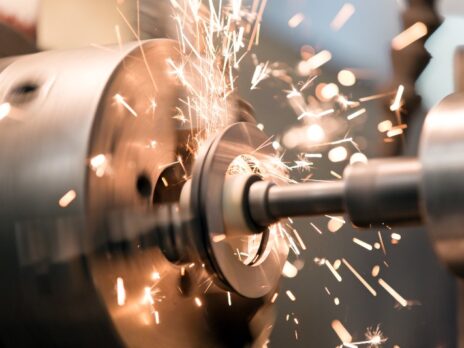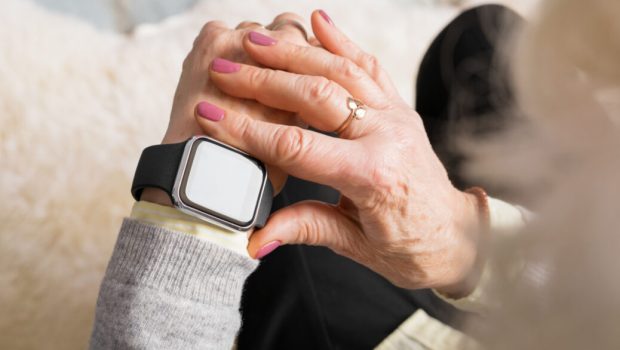Ageing Population and Medical Devices: Technology trends
The shift towards home care for and ageing population has been occurring for several years. The advancement of medical device technologies has resulted in a significant increase in the number of conditions that can be managed in a home care setting. To capitalize on this strong demand and growth, manufacturers are increasingly producing consumer-targeted equipment.
Listed below are the key technology trends impacting the ageing population theme, as identified by GlobalData.
Wearable devices
Wearable devices have the potential to help and support senior citizens’ autonomy and improve their quality of life. Individuals can wear sensors to track various health matrices, aid in rehabilitation and treatment evaluation, identify potential illness, monitor safety concerns, such as falls, and serve as emergency alert systems. Fitness-tracking watches can also help encourage older adults to monitor their physical activity and sleep behaviours.
Artificial intelligence (AI)
AI is ushering in a new era of personalised medicine in which treatments are tailored to individual patients. AI is making strides in early disease detection and has the potential to significantly reduce the burden of chronic disease and allow people to live healthier lives for longer.
Predictive prevention can revolutionise public health and prevent people from developing illnesses as computing power and algorithms become more sophisticated. Better use of public data, along with digital tools and a stronger understanding of broader health factors will allow healthcare providers to identify risks and assist those who are most in need before they become patients.
From the perspective of an ageing population, AI technology has already aided in the treatment of eye disease, cancer, and has even predicted Alzheimer’s disease years before diagnosis. A range of AI systems has been developed to help people compensate for the physical and sensory deficits that often accompany ageing. Examples range from text-to-speech systems for people with low vision, intelligent drug dispensers, and medication prompt devices, to remote sensors and safety devices for mobility recording and fall prevention and detection.
Content from our partners


Artificial conversationalists and chatbots have also been used to reduce loneliness among the ageing population by providing social support. Voice-controlled intelligent personal assistants such as Amazon Echo and Google Home provide companionship, reminders, emergency communication, and even entertainment for older people living alone, while also reducing the burden on caregivers.
Medical robotics
The development of assistive medical robots and devices created to fulfil the specific needs of older adults is increasing. These include assistive walking devices that help in facilitating mobility, manoeuvrability, and independence. These devices are enhanced with information and communication technology that can detect falls with the use of alarm systems. Medical exoskeletons are also gaining approval for home use to rehabilitate those recovering from accidents or strokes. Medical exoskeletons and prosthetics can enhance mobility and independence, allowing seniors to improve their quality of life.
Advances in technology have enabled the development of robots that are closely adjusted to the needs of the elderly. In a care environment, this can improve organisational efficiency, quality of care, and resident wellbeing.
Companies such as Softbank Robotics are working on developing social robots for companionship, Toyota and Honda have been developing human support robots for many years, and Belgian start-up company Zora Robotics is developing eldercare services via customised Alexa-enabled Echo devices. In Japan, Robear has been available on an experimental basis since 2015. Parorobots developed PARO, a therapeutic robot that meets the psychological and emotional needs of the elderly in hospitals, especially those suffering with dementia.
The number of robots being used to provide care and support to elderly and disabled patients is currently very low but is expected to increase significantly over the next decade, particularly in countries like Japan, which are facing a predicted shortfall in the number of caregivers. Initial use cases for these products are relatively simple, but they will increasingly be called upon to perform more complex tasks, such as reminding patients when to take medication and providing emotional support and human-like interaction for those lacking regular human contact.
Virtual and augmented reality
The use of virtual reality (VR) and augmented reality (AR) promises many benefits for older adults, such as promoting a healthy lifestyle with health-related gaming, maintaining social contact via digital interfaces, supporting rehabilitation, and aiding in everyday life tasks. The use of VR and AR in psychotherapy and rehabilitation can contribute to maintaining older adults’ motor abilities, fitness, balance, and memory. Moreover, VR intervention programmes can be used to train cognitive and physical functions in older adults with mild cognitive impairments.
Companies such as Rendever build VR headsets for senior citizens both at home and in assisted living communities. The experience transports the wearers to different locations and provides new experiences for those with limited mobility. Tribemix instead uses VR for cognitive stimulation and training to help dementia patients.
Remote patient monitoring (RPM)
Chronic and severe illnesses plague the majority of senior citizens. RPM technology is useful in managing chronic disease, providing post-acute care, monitoring the safety of the elderly population, and increasing older patients’ participation in managing their health.
The technology ensures providers are continually looking at the current condition of their patient’s health, rather than depending on static snapshots of health data such as weight, blood pressure, pulse oximetry, blood glucose level, and so on, which could be days, weeks, or even months old. It also slows the progression of chronic disease and ensures ongoing recovery after being discharged from an acute care facility.
Intelligent drug dispensing
Maintaining a consistent medication regimen can be difficult for elderly people. Poor medication adherence is caused by a variety of factors, including an increase in the number of medications and frequency of medication intake, as well as a prolonged course of drug therapy. Non-compliance has negative consequences, and lower patients’ quality of life, and also increase mortality.
Medication-dispensing technology is a recent technological advancement aimed at improving medication adherence. The complexity of these devices ranges from systems that help organise medications, to those that provide reminders to systems that measure medication adherence, to providing in-person intervention.
Telemedicine
Telemedicine is increasingly being used to help the elderly maintain their independence and continue living in their own homes. Elderly individuals have become one of the main target groups for telemedicine technologies, with many devices available for people with chronic health conditions and those with limited mobility or memory problems typical of advanced age.
One of the key attributes of telemedicine systems is electronic connectivity, which transcends time and distance barriers. Telemedicine, therefore, decreases uneven distribution of quality of care and socioeconomic and geographic disparities in access to care.
However, there are potential barriers to the widespread adoption of telemedicine among older adults, including financial barriers related to the accessibility of digital devices and the internet, heterogeneity in digital literacy, as well as cognitive impairment and disability.
This is an edited extract from the Aging Population and Medical Devices – Thematic Research report produced by GlobalData Thematic Research.











Gloss